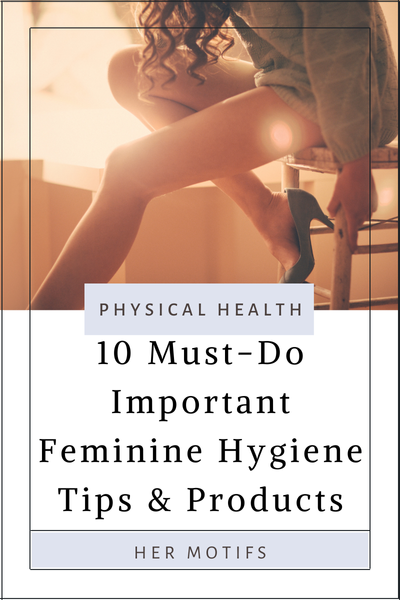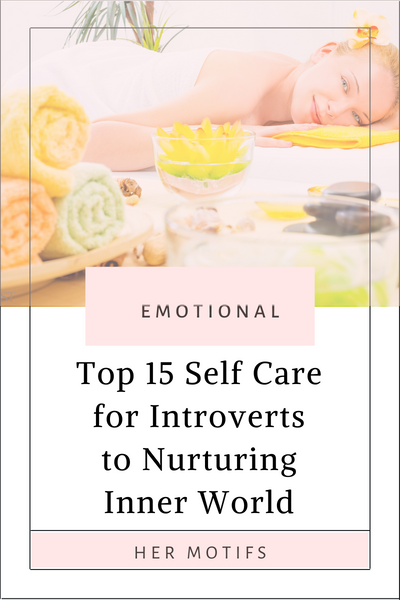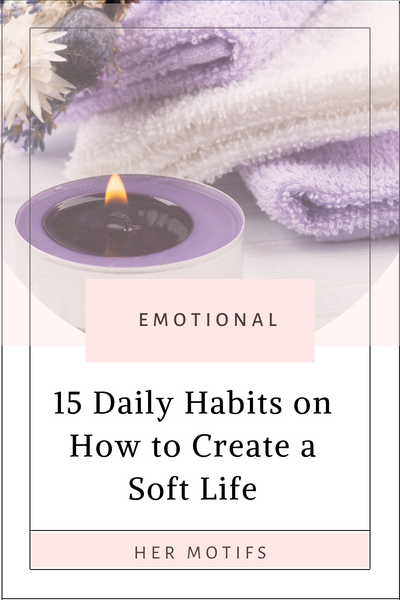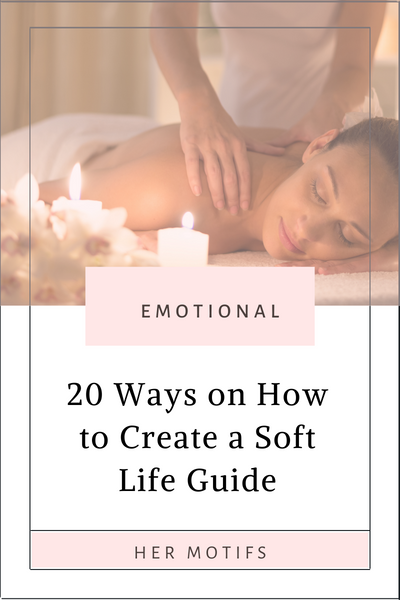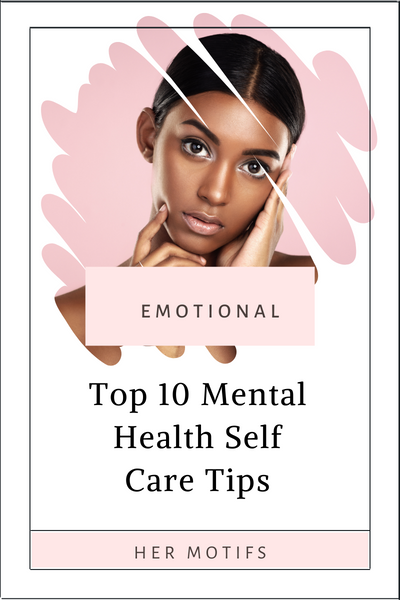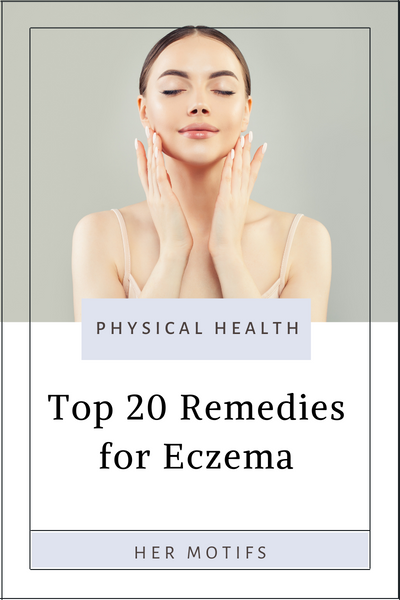Top 10 Tips for Body Care Routine
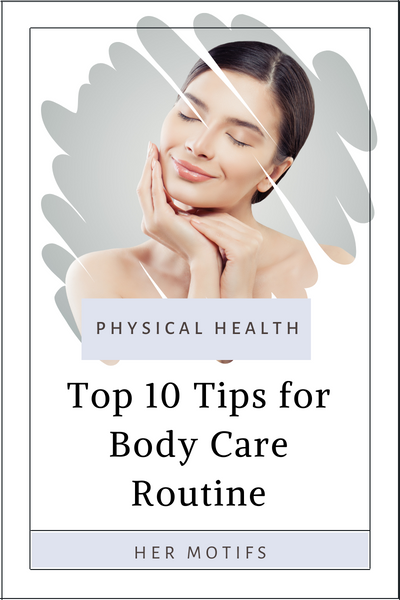 Body care includes personal hygiene practices such as bathing or showering regularly, using appropriate cleansers and soaps, and maintaining oral hygiene by brushing and flossing teeth.
Body care includes personal hygiene practices such as bathing or showering regularly, using appropriate cleansers and soaps, and maintaining oral hygiene by brushing and flossing teeth.
It also involves moisturizing the skin, protecting it from the sun, and exfoliating to remove dead skin cells.
Additionally, body care extends to taking care of specific areas, such as feet, hands, and underarms, to prevent issues like dryness, odor, or infections.
From selecting the right products to incorporating mindful practices into your daily regimen, these tips are designed to help you cultivate a healthy, radiant, and well-nurtured body.
Whether you’re seeking to establish a new routine or enhance your existing one, these guidelines will empower you to prioritize self-care and unlock the transformative potential of a dedicated body care regimen. A thoughtful body care routine can be a daily ritual of self-care, a moment where you reconnect with yourself and your body. It can serve as a form of mindfulness, allowing you to be fully present as you pamper and nurture your skin and overall health. This routine isn’t just about external appearances; it’s about how you feel in your own skin.
.
.Best Body Care Tools
There is nothing better than taking care of yourself, and this maybe through meditation, self care, body care or simply mindset mastering. Below are some of favorites tips and tools
 Plush Soft Long Robe
Plush Soft Long Robe
The most luxurious, softest, plush, comfortable robes ever
- 100% Polyester, tie closure, machine wash
- Perfect for sensitive for all skin conditions
- Super soft, plush, shawl collar fleece bathrobe
- Perfect for at home spa day, lounging and self care days
.
 Self Care Gift Basket
Self Care Gift Basket
Designed to help you achieve and maintain salon-quality nails at home, by shaping, filing, and buffing for flawless nails wherever you go
- Nail Drill Kit
- Cordless Electric Nail File
- 10 Attachments and LED Light
- Electric Manicure Set with Adjustable Speed
- E-File for Manicure and Pedicure, with Storage Case
.
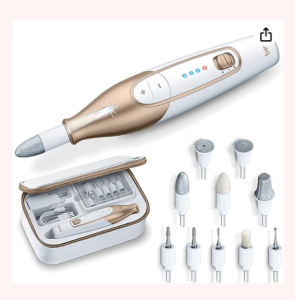 Self Care Nail Kit
Self Care Nail Kit
Comes with 10 drill easy attachments, great for at home nail spa day
- LED Light, Electric Manicure Set with Adjustable Speed
- E-File for Manicure and Pedicure, with Storage Case
- Cordless electric nail drill for salon-quality nails at home, by shaping, filing, and buffing for flawless nails
.
 Total Body Step Machine
Total Body Step Machine
Has 2 detachable resistance bands, targets 20 key muscles, while ensuring a low-impact cardio session.
- Compact cardio device lets you work your core, arms, glutes, and shoulders.
- Resistance bands workout for every muscle group
- LCD screen keeps you updated on your steps, duration, and calories burned and its noise free
.
 Facial Steamer Spa Kit
Facial Steamer Spa Kit
Perfect for at home spa treatments and skin care
- 8 complimentary products – a headband, silicone brush for cleansing, extraction kit to remove blackheads, razor for derma planing
- ultrasonic scrubber for deep cleansing, jelly mask with jade roller, and spatula for skin moisturization and rejuvenation.
.
 Infrared for Cramps
Infrared for Cramps
Therapy Back Brace for Thigh, Lumbar, Stomach Pain, EMF Free, Auto Off, Smart Controller
- More durable than traditional heating pads.
- Delivers more evenly distributed heat.
- Can be worn for long periods without discomfort
- Can heat it up and detach the cord, will stay hot for long time after detachment
.
1. Hygiene Routine
Benefit: Helps keep the body clean, removes dirt, sweat, and bacteria, preventing skin infections and promoting overall freshness.
A hygiene routine is a set of practices and habits aimed at maintaining cleanliness, preventing the spread of germs, and promoting overall well-being.
- Handwashing: Wash your hands with soap and clean, running water for at least 20 seconds, ensuring to lather all surfaces, including the backs of your hands, between your fingers, and under your nails.
- Oral Care: Maintaining good oral hygiene is essential for oral health and overall hygiene. Don’t forget to brush your tongue to remove bacteria and freshen your breath.
- Personal Hygiene Practices: It is important to establish a daily routine for personal hygiene practices, change into clean clothes and undergarments daily, and launder them properly to maintain hygiene.
A consistent and thorough hygiene routine helps prevent the spread of infections, promotes good health, and enhances overall well-being.
.
2. Moisturizing
Benefits: Helps prevent dryness, keeps the skin soft and supple, and reduces the risk of skin problems like itching, flaking, and roughness.
A moisturizing routine is essential for maintaining healthy, hydrated skin and preventing issues like dryness, flakiness, and dullness. Moisturizers help to replenish and lock in moisture, keeping the skin soft, supple, and youthful. Three tips to establish an effective moisturizing routine:
- Choose the Right Moisturizer: Select a moisturizer that suits your skin type and addresses your specific concerns. If you have dry skin, opt for a rich, cream-based moisturizer that provides intense hydration. For oily or combination skin, choose a lightweight, oil-free moisturizer that won’t clog pores. If you have sensitive skin, look for gentle, fragrance-free moisturizers.
- Timing and Frequency: Apply moisturizer to clean skin after showering or washing your face when the skin is still slightly damp. This helps lock in moisture and enhances absorption. For the body, apply moisturizer all over, paying attention to dry areas like elbows, knees, and feet. For the face, use a separate moisturizer designed for facial skin.
- Sun Protection: Incorporate sun protection into your moisturizing routine by choosing a moisturizer with SPF (sun protection factor). This way, you can provide your skin with hydration while also safeguarding it against the damaging effects of UV rays. Opt for a broad-spectrum sunscreen moisturizer with at least SPF 30 and apply it generously to exposed areas of the body, including the face, neck, and hands.
By following these tips, you can establish a moisturizing routine that effectively nourishes and protects your skin. Regular moisturization helps maintain a healthy moisture barrier, reduces dryness and irritation, promotes a youthful complexion, and supports overall skin health.
.
3. Sun Protection
Benefit: Shields the skin from harmful UV rays, prevents sunburn, reduces the risk of skin cancer, and slows down premature aging. Protect your skin from the sun by using sunscreen with a high SPF and wearing protective clothing.
A sun protection routine is crucial for safeguarding the skin against the harmful effects of ultraviolet (UV) radiation from the sun. Prolonged sun exposure can lead to sunburn, premature aging, and an increased risk of skin cancer.
- Wear Sunscreen Daily: Apply a broad-spectrum sunscreen with a Sun Protection Factor (SPF) of 30 or higher to all exposed areas of skin, even on cloudy days. Choose a sunscreen that offers protection against both UVA and UVB rays. Apply it generously and evenly, at least 15 minutes before sun exposure, to ensure proper absorption.
- Seek Shade and Wear Protective Clothing: Whenever possible, seek shade, especially during the peak hours of sun intensity (usually between 10 a.m. and 4 p.m.). Stay under umbrellas, awnings, or trees to minimize direct sun exposure.
- Take Extra Precautions in Sun-Intensive Environments: If you are spending an extended period in sun-intense environments, such as the beach or high-altitude areas, take additional precautions. Consider using sun-protective clothing specifically designed with UPF (Ultraviolet Protection Factor) to provide enhanced sun protection.
Consistent sun protection helps prevent sunburn, reduces the risk of skin cancer, minimizes premature aging signs like wrinkles and age spots, and maintains overall skin health. Remember to be diligent with your sun protection routine throughout the year, even on overcast days, as UV rays can penetrate clouds and cause skin damage.
.
4. Exfoliation
Benefit: Improves skin texture, enhances cell turnover, unclogs pores, and helps prevent ingrown hairs, leaving the skin radiant and rejuvenated. Regularly exfoliate your body to remove dead skin cells and promote smoother skin.
An exfoliation routine is an important part of skincare to help maintain a smooth, radiant complexion. Exfoliating removes dead skin cells, unclogs pores, and promotes cell turnover, revealing fresh and rejuvenated skin. Exfoliation routine examples:
- Choose the Right Exfoliator: There are two main types of exfoliators: physical exfoliators and chemical exfoliators. Physical exfoliators use granules or brushes to physically scrub away dead skin cells. Examples include scrubs with ingredients like sugar, salt, or finely ground particles.
- Exfoliate in Moderation: Exfoliation should be done in moderation to avoid over-exfoliating, which can lead to irritation and sensitivity. Determine how often your skin can tolerate exfoliation without causing redness or dryness. For most people, exfoliating 1-3 times per week is sufficient.
- Follow Proper Technique: When exfoliating, apply gentle pressure and use circular motions to massage the exfoliator onto damp skin. Avoid harsh scrubbing, as it can damage the skin. Pay attention to areas prone to dryness or congestion, such as the T-zone (forehead, nose, and chin), but remember to treat the entire face and body.
Note: It’s important to avoid exfoliating certain areas of the body that are more sensitive, such as the delicate skin around the eyes. Additionally, if you have specific skin concerns or conditions, it’s advisable to consult with a dermatologist or skincare professional to determine the most suitable exfoliation routine for your skin.
.
5. Hydration
Benefit: Hydrates the body from within, maintains skin elasticity, flushes out toxins, and promotes overall skin health and a glowing complexion. Stay hydrated by drinking an adequate amount of water throughout the day.
A hydration routine is essential for maintaining optimal skin health and overall well-being. Adequate hydration helps keep the skin moisturized, plump, and radiant, while also supporting the proper functioning of vital organs and bodily systems. Below are some examples
- Drink Sufficient Water: Staying properly hydrated starts with consuming an adequate amount of water throughout the day. The general recommendation is to drink at least eight glasses of water (about 2 liters) daily, but individual needs may vary based on factors such as age, activity level, and climate.
- Incorporate Hydrating Foods into your diet, such as fruits and vegetables with high water content (e.g., watermelon, cucumber, citrus fruits), and soups and broths. These foods not only provide hydration but also offer essential nutrients that contribute to overall health.
- Monitor Environmental Factors: Be mindful of environmental factors that can affect your hydration levels. Hot and dry weather, air conditioning, and heating systems can all contribute to increased water loss from the body. In such conditions, it is important to be more proactive in maintaining hydration.
By following these tips and incorporating them into your daily routine, you can establish an effective hydration routine. Remember to listen to your body’s signals and increase your fluid intake if you experience symptoms of dehydration, such as dry mouth, fatigue, or dizziness.
.
6. Balanced Diet
Benefit: Provides essential vitamins, minerals, and antioxidants for healthy skin, boosts collagen production, and supports overall body health. Eat a nutritious diet rich in fruits, vegetables, and whole grains.
A balanced diet routine is essential for providing your body with the necessary nutrients, energy, and sustenance for optimal health and well-being. A well-balanced diet consists of a variety of foods from different food groups, ensuring that you get a wide range of nutrients to support your body’s functions. Three tips to establish an effective balanced diet routine:
- Include Nutrient-Dense Foods: Focus on incorporating nutrient-dense foods into your diet. Include a variety of fruits, vegetables, whole grains, lean proteins (such as poultry, fish, legumes, and tofu), and healthy fats (such as avocados, nuts, and olive oil) in your meals. These foods provide a wide array of vitamins, minerals, antioxidants, and fiber that support overall health and help prevent chronic diseases.
- Practice Portion Control: Portion control is crucial for maintaining a balanced diet. Be mindful of the quantity of food you consume to avoid overeating or consuming excessive calories. Use smaller plates and bowls to help control portion sizes. Fill half of your plate with vegetables, a quarter with lean protein, and the remaining quarter with whole grains or starchy vegetables.
- Stay Hydrated and Limit Added Sugars: Hydration is an important aspect of a balanced diet routine. Drink plenty of water throughout the day to support bodily functions and prevent dehydration. Limit the consumption of sugary beverages like soda, fruit juices, and energy drinks, as they can contribute to excessive calorie intake and provide little nutritional value.
Bonus Tip: Practice mindful eating by paying attention to the quality and enjoyment of your meals. Eat slowly, savor the flavors, and listen to your body’s hunger and fullness cues. This can help prevent overeating and promote a healthier relationship with food.
Remember to consult with a healthcare professional or registered dietitian for personalized dietary advice based on your specific needs and goals.
.
7. Exercise
Benefit: Get regular physical activity to promote circulation and overall well-being. Improves blood flow, enhances skin health, boosts mood, reduces stress, and supports weight management.
Regular exercise helps strengthen muscles, improve cardiovascular health, increase flexibility, and boost energy levels. Here are three tips to establish an effective exercise routine:
- Choose Activities You Enjoy: Engage in physical activities that you genuinely enjoy. Whether it’s running, dancing, swimming, cycling, weightlifting, or practicing yoga, find activities that bring you joy and make you feel motivated to move. When you enjoy the exercise you’re doing, you’re more likely to stick to your routine and make it a consistent part of your lifestyle.
- Set Realistic Goals and Gradually Increase Intensity: Set realistic fitness goals that align with your abilities and aspirations. Start at a comfortable level and gradually increase the intensity and duration of your workouts over time. This allows your body to adapt and progress safely. Incorporate a mix of cardiovascular exercises (like jogging or cycling), strength training (using weights or resistance bands), and flexibility exercises (such as stretching or yoga) to achieve a well-rounded exercise routine that targets different aspects of fitness.
- Prioritize Consistency and Variety: Consistency is key when it comes to reaping the benefits of exercise. Aim for at least 150 minutes of moderate-intensity aerobic activity or 75 minutes of vigorous-intensity aerobic activity per week, along with muscle-strengthening exercises at least two days a week.
Bonus Tip: Listen to your body and practice proper form and technique during exercise. Warm up before each session to prepare your muscles and joints, and cool down afterward to gradually decrease your heart rate. If you’re new to exercise or have any underlying health conditions, consult with a healthcare professional before starting an exercise routine to ensure it’s safe and appropriate for you.
Remember that finding joy in the process and prioritizing your health should be the driving force behind your exercise routine.
.
8. Foot Care
Benefit: Take care of your feet by keeping them clean, moisturized, and wearing comfortable shoes. Prevents foot odor, infections, and dryness, promotes foot health, and enhances overall comfort and mobility.
Our feet endure a lot of stress and strain throughout the day, so it’s important to take care of them to prevent discomfort, pain, and various foot problems. Examples below include
- Clean and Dry: Proper hygiene is the foundation of foot care. Wash your feet daily with warm water and mild soap to keep them clean and free from bacteria. Pay special attention to the areas between your toes. After washing, make sure to thoroughly dry your feet, including the spaces between your toes.
- Moisturize and Massage: Keep your feet moisturized to prevent dry, cracked skin. After washing and drying your feet, apply a foot cream or lotion to keep the skin soft and supple. Focus on areas prone to dryness, such as the heels and soles. Additionally, give yourself regular foot massages to promote circulation, relieve tension, and provide relaxation.
- Wear Proper Footwear: Choose footwear that provides adequate support, fits well, and is appropriate for the activity you’re engaging in. Ill-fitting or uncomfortable shoes can lead to foot pain, blisters, and other foot problems. Opt for shoes with a roomy toe box to allow for proper toe movement and avoid squeezing or crowding the toes. Wear socks made of breathable materials to absorb moisture and reduce the risk of fungal infections.
Taking care of your feet helps prevent common foot ailments, such as dryness, calluses, corns, and fungal infections. It also contributes to better foot health, mobility, and overall well-being. If you experience persistent foot pain or have specific foot concerns, it’s advisable to consult with a podiatrist or healthcare professional for a proper diagnosis and personalized advice.
.
9. Sleep
Benefit: Get enough quality sleep to allow your body to rest and rejuvenate. Supports cell regeneration, repairs damaged skin cells, reduces under-eye circles, and promotes a refreshed appearance.
Establishing a consistent sleep routine can help regulate your body’s internal clock, improve the quality of your sleep, and ensure you wake up feeling refreshed. Here are three tips to establish an effective sleep routine:
- Maintain a Consistent Sleep Schedule: Aim to go to bed and wake up at the same time every day, even on weekends. This helps regulate your body’s circadian rhythm, making it easier to fall asleep and wake up naturally. Choose a bedtime that allows for an adequate amount of sleep, typically around 7-9 hours for adults.
- Create a Sleep-Friendly Environment: Set up your sleep environment to promote a restful and comfortable atmosphere. Keep your bedroom cool, dark, and quiet. Use curtains or blinds to block out excess light, invest in a comfortable mattress and pillows that support your sleep position and preferences, and consider using earplugs or a white noise machine if external noises are disruptive.
Adequate and restorative sleep supports overall health, cognitive function, mood regulation, and immune system function. If you continue to experience sleep difficulties or have concerns about your sleep quality, it’s advisable to consult with a healthcare professional for further evaluation and guidance.
.
10. Stress Management
Benefit: Reduces stress-related skin issues like acne and eczema, promotes better sleep, and contributes to overall mental and physical well-being. Practice stress management techniques, such as meditation or relaxation exercises.
Effectively managing stress can help reduce its negative impact on your health, improve your ability to cope with challenges, and enhance your overall quality of life. Here are three tips to help you manage stress effectively:
- Practice Relaxation Techniques: Incorporate relaxation techniques into your daily routine to help alleviate stress and promote a sense of calm. Deep breathing exercises, meditation, progressive muscle relaxation, and mindfulness techniques are all effective ways to relax your body and quiet your mind.
- Engage in Physical Activity: Regular physical activity is an excellent way to manage stress. Engaging in exercises like walking, jogging, dancing, yoga, or any form of physical activity that you enjoy can help reduce tension, boost your mood, and increase the production of endorphins, which are natural mood elevators.
- Prioritize Self-Care: Taking care of yourself is crucial for managing stress effectively. Prioritize self-care activities that nurture your physical, mental, and emotional well-being. This can include activities such as getting enough sleep, maintaining a balanced diet, spending time with loved ones, pursuing hobbies, practicing self-compassion, setting boundaries, and engaging in activities that bring you joy and relaxation.
Bonus Tip: Build a strong support system. Surround yourself with people who uplift and support you. Seek social connections with friends, family, or support groups. Sharing your feelings and experiences with trusted individuals can help reduce stress and provide a sense of belonging and support.
It’s important to remember that managing stress is a personal journey, and different techniques work for different individuals. Experiment with various stress management strategies, and find what works best for you. If stress becomes overwhelming or starts to interfere significantly with your daily life, consider seeking professional help from a healthcare provider or therapist.
.
Conclusion
Regular body care practices offer numerous benefits. They help keep our skin clean, moisturized, and protected from environmental factors. Proper nutrition and hydration nourish our bodies from within, supporting vital functions and providing energy. Exercise keeps our muscles strong, improves cardiovascular health, and boosts our mood. Adequate sleep rejuvenates us and supports cognitive function. Hygiene practices prevent the spread of germs and infections. Grooming enhances our appearance, boosts self-confidence, and helps us present ourselves to the world with pride.
Ultimately, investing in a body care routine is an investment in yourself. It demonstrates self-respect, self-love, and a commitment to nurturing your physical and emotional well-being. Embrace the power of a body care routine and embark on a journey of self-care that will benefit you for years to come.
- 100 Valentine Lovers Questions - February 24, 2025
- 2025 New Year Growth Quotes - February 24, 2025
- 2025 Inspiring Self Love Quotes - February 24, 2025


